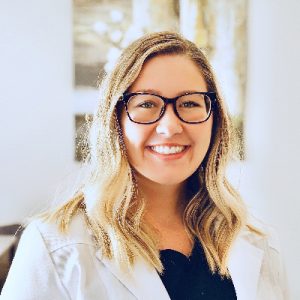Globally, myopia impacts the lives of over 41% of all teenagers.
Myopia (nearsightedness) is a common refractive error that affects both children and adults. This condition occurs when light entering the eye is focused in front of the retina rather than directly on it, resulting in blurry distance vision.
Myopia is generally diagnosed during childhood, when a child’s eyes are rapidly growing, and can continue to worsen until the eyes have reached their adult size— typically around age 18.
Why is myopia a serious eye condition?
Progressive myopia is nearsightedness that worsens year after year.
Myopia is not just a number on an optical prescription, requiring corrective lenses for vision clarity, it is a condition that can increase the risk of sight-threatening eye diseases in the future.
When myopia progresses quickly, with a significant increase in optical prescription over the course of a year, the risk of developing such as cataracts, glaucoma, macular degeneration and retinal detachment increases as well.
How is myopia treated?
The typical treatment for myopia is corrective lenses in the form of glasses or contact lenses. However, while eyewear can improve vision clarity to help you see better, it cannot slow down myopia progression.
Myopia management can reduce myopia progression by up to 78 percent.
Although a cure for myopia has yet to be discovered, a program called Myopia Management has been proven effective in decreasing the rate of myopia progression—sometimes completely stopping it altogether.
Speak with an eye doctor near you for advice on the best myopia management treatment options for your child’s vision and lifestyle.
SEE RELATED: The Benefits of Outdoor Play for Children with Myopia
Myopia management strategies
Myopia management involves specialized treatments aimed at slowing or stopping the myopia from worsening.
Treatment options in myopia management include changing the shape of the cornea and relaxing the focusing of the eye, in order to reduce the stress and fatigue that comes with myopia.
Every myopia management plan is individualized and takes into account the age of the child, their optical prescription, and their personal lifestyle.
Follow-up visits every few weeks or months are advised to facilitate evaluation of the treatment’s effectiveness and to make any necessary changes.
The most common treatment options include:
- Orthokeratology (Ortho-K)
- Atropine eye drops
- Multifocal optical or contact lenses
Orthokeratology (Ortho-K)
Ortho-k contact lenses are specially designed to slow the progression of myopia by gently reshaping the cornea.
The cornea is the primary focusing part of the eye, and by reshaping this surface the eye can focus light correctly, giving you clear vision.
Ortho-k are rigid gas permeable (RGP) contact lenses worn while sleeping and removed in the morning, offering clear vision as a result of a change in corneal shape.
Ortho-K lenses eliminate the need for daytime eyewear, making them a convenient choice for many children and young adults.
Atropine eye drops
Atropine eye drops have been shown to successfully reduce the rate of myopia progression in children.
A recent study published in Ophthalmology (2019) found that low-dose atropine eye drops (0.01%) applied before bedtime can effectively slow down worsening myopia.
Multifocal lenses
Multifocal glasses and soft contact lenses offer clear vision for all distances— near, intermediate and far.
In 2020, the National Institutes of Health (NIH) funded a clinical trial that compared the effectiveness of multifocal lenses to single vision lenses when it comes to correcting myopia and controlling its progression.
The NHI study revealed that wearing multifocal glasses or soft contact lenses can slow the progression of myopia.
Other ways to slow or prevent myopia
Increase outdoor play and natural light exposure
Ophthalmic Research (2020) published a study revealing that children who spend at least 14 hours per week outside have less myopia than those who spend fewer hours outdoors.
PLOS One (2015) published a study in accordance with other various studies, that found a clear correlation between near vision tasks and myopia progression.
Speak with an eye doctor for advice on the best myopia management treatment options for your child’s vision and lifestyle.
LEARN MORE: Guide to Pediatric Eye Conditions
If you’re worried about your child’s myopia, speak with your optometrist about starting a myopia management plan.
Your eye doctor will discuss the best options for your child.









